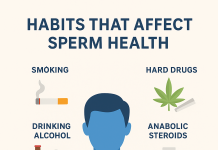Understanding how population growth impacts healthcare access in low-income communities is crucial. In certain regions, especially low-income societies, the available health resources, both human and material, are not enough. As more individuals are born or relocate to a certain city, the need for healthcare services increases. When the supply of health services, materials, and facilities does not keep pace with the population influx, the healthcare system gets strained.

Access to healthcare services is critical to good health, yet rural residents face a variety of access barriers. Let’s take a closer look at how population growth impacts healthcare access in low-income communities:
Limited Resources and Increasing Demand
In low-income regions, hospitals and clinics face a common problem of lacking trained personnel, space, and even the requisite medical supplies. With an increasing population, resources do not get the needed boost. A higher population, lower resources, strained healthcare systems, and an inefficient health care system can lead to multiple negative effects.
Staff Shortage
Nurses, doctors, and other care staff report a higher workload than usual because there is a steady increase in the overall population, while the resources to deal with these problems are severely limited. All this boils down to fewer health workers, leading to burnout, staff errors, or worse, resignation.
Limited Access to Medicines and Equipment
An increase in the population can also impact the availability of drugs and medical tools. When patient numbers rise but medicine supplies are low, there may not be enough drugs or tools for everyone. This delay in treatment can change small health problems into major ones.
Rising Costs
The need for care sometimes increases costs. If a healthcare professional is in high demand yet there’s a limited number available, the cost of healthcare services goes up. Even small increases in cost can be impossible for those living below the poverty line.
What Can Be Done?
To resolve this issue, there needs to be more healthcare support in growing regions. More clinics need to be built, more healthcare workers need to be recruited and trained, and healthcare services need to be made affordable. Other community health initiatives, as well as mobile clinics, can help expand the reach.
In Summary
Lower-income people living in high-population growth areas tend to have difficulty accessing healthcare services. As more people require the services, there aren’t enough resources to cater to everyone, and countless individuals are left behind. However, with adequate planning, support, and mobile healthcare services, equitable healthcare access can be achieved.
Remember to subscribe to our newsletter for more updates from us!









